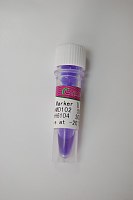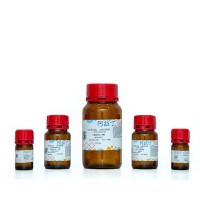Cleavage of Plasmid DNA by Eukaryotic Topoisomerase II
互联网
497
Topoisomerase II is an essential enzyme that is required for a number of critical nuclear processes. All of the catalytic functions of topoisomerase II require the enzyme to generate a transient double-stranded break in the backbone of the double helix. To maintain genomic integrity during the cleavage event, topoisomerase II forms covalent bonds between active site tyrosyl residues and the newly generated 5′-DNA termini. In addition to the critical cellular functions of the type II enzyme, several important anticancer drugs kill cells by increasing levels of covalent topoisomerase II–DNA cleavage complexes. Due to the physiological importance of topoisomerase II and its role in cancer chemotherapy, several methods have been developed to monitor the in vitro DNA cleavage activity of the type II enzyme. The plasmid-based system described in this chapter quantifies enzyme-mediated double-stranded DNA cleavage by monitoring the conversion of covalently closed supercoiled DNA to linear molecules. The assay is simple, straightforward, and does not require the use of radiolabeled substrates.







